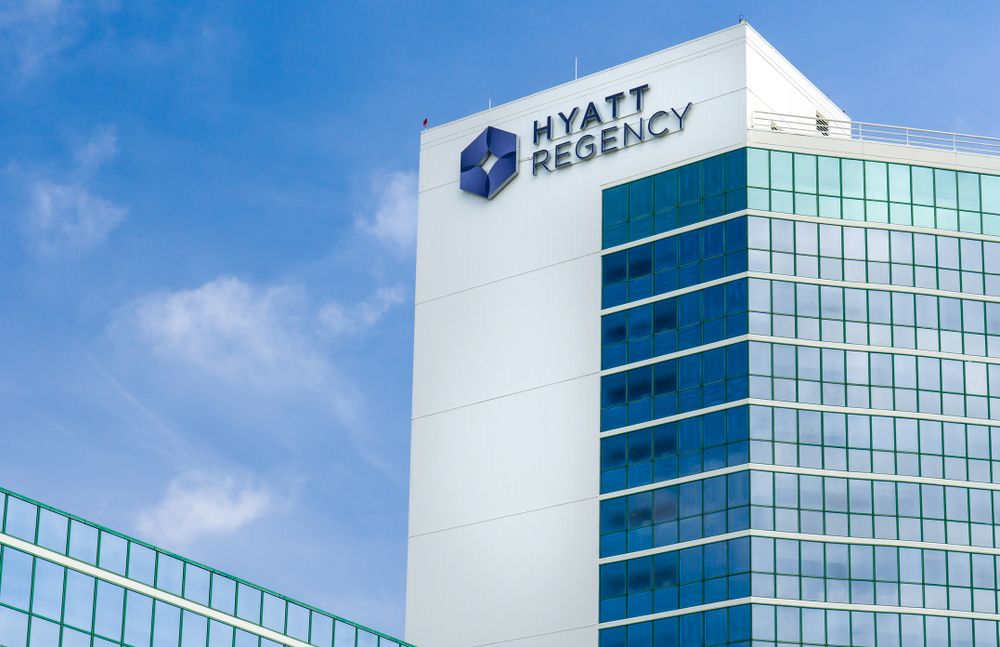In the space of four years, The Hyatt has reduced its water use by half!

Purpose:
The Hyatt Regency Sanctuary Cove resort is a 247-room five star hotel, catering mainly to conference and leisure guests. It has four kitchens, a swimming pool, spa and beach pool, as well as two golf courses.
Key outcomes
Initially, the Hyatt Regency retrofitted 3 star rated, nine litre/minute shower roses into its guestrooms to overcome a design problem that resulted in shower overflow and ongoing maintenance problems. This short-term problem provided the groundwork for a whole new approach to water management at the resort. Since then, the Hyatt has reduced water use from 140,000,000 litres in 1996 to 54,583,000 in 2000. Not only that, but the program has projected annual savings of nearly $85,372!
Driving forces for water conservation
The resort is a 247 room, five star hotel, catering mainly for conference and leisure guests. It has four kitchens, a swimming pool, spa and beach pool, and two golf courses. Managed by Hyatt International, it was constructed in 1988.
In 1996 the Hyatt Regency Sanctuary Cove's shower retrofitting project was included in the WaterWise Manual of Best Practices: Water conservation in large hotels and resorts (1996).
How water conservation measures were established
Stage 1. The shower rose retrofit
As part of his research into water shower roses, Chief Engineer Ian Crookston developed the following theoretical calculation to analyse the water and cost savings available to the resort via water conserving showers:
One person @ one 10 minute shower/day with old 27 litre/minute showers = 270 litres
One person @ one 10 minute shower/day with new 9 litre/minute showers = 90 litres (ie) one third of the original consumption
70% occupancy/year = approximately 63,100 double rooms and potentially 107,000 guests
Each guest @ one five minute shower/day using the 27 litre/minute shower roses = 14,445 kL/year
Water saved/year = 9,625 kL/year
Basic water and trade waste charges combined @ $1.28/kL, this example equals a financial saving of $12,340/year (not including energy savings)
To purchase and install the shower roses for each guest room, the Hyatt Regency Sanctuary Cove calculates a less than one-year payback on investment.
Stage 2. Benchmarking and monitoring
During the research and writing of the Manual of Best Practices, the Gold Coast City Council (Gold Coast Water) identified the lack of water monitoring equipment and practices in many large hotels and resorts on the Gold Coast. While many hotels and resorts were interested in the potential financial benefits of water conservation, few if any had the means to:
- benchmark current water use
- identify major water use areas
- conduct accurate cost/benefit analyses on water conserving equipment
- evaluate the real water savings made by WaterWise retrofits
In 1997, Hyatt Regency Sanctuary Cove began work with the GCCC (Gold Coast Water) in the WaterWise arena by participating in a project designed specifically to benchmark and monitor water usage in its kitchen (servicing The Cove Cafe).
Between October 1997 and February 1998, Chief Engineer Ian Crookston benchmarked water use in The Cove Kitchen. During this time, WaterWise training was conducted with staff supervisors, a new water and energy efficient dishwasher was installed and calculations were made on the installation of flow controls into all kitchen (and resort) taps.
A process of continual improvement
Challenges and key success factors
A key challenge for the Hyatt Regency was to ensure guest comfort was not compromised in any way. Since the installation of the 9 litre per minute shower roses at Hyatt Regency Sanctuary Cove, the resort has not received a single guest complaint about shower quality. Indeed, in 1997 the resort won the Deluxe Accommodation category of the Queensland Tourism Awards, proving that water conservation and superior service and facilities in the hospitality industry work hand-in-hand.
The ongoing success of water conservation initiatives at the Hyatt Regency can in part be attributed to the impact the initial the pilot project in educating the chief engineer about the opportunities for improving the efficiency of the hotel.
Conclusion
The Hyatt Regency's Cove actions have clearly demonstrated the value of benchmarking water use in commercial properties. The data collected highlights the most effective water conserving strategies and confirmed the benefit of their implementation.
The effort required from engineering staff to undertake the project was minimal, yet the identification of projected annual savings was $85,372 and annual true savings exceeded those predicted. This was seen as extremely beneficial for the reputation of the engineering department and for the resort's bottom line.
Its sub metering process to monitor water and other savings has proved the financial benefits of such investments in water efficient equipment to the hospitality industry. The Hyatt Regency Sanctuary Cove is one of the first large hotels/resorts on the Gold Coast to invest in water and energy efficient dishwashers.
Payback
With the total cost of purchase and installation of the new dishwasher at approximately $40,000, the Hyatt Regency Sanctuary Cove estimates it will recover its investment in less than two years.
Given the successful results and payback period of the Cove kitchen’s monitoring process, the Hotel installed a second similar dishwasher in October 2000 in the Banqueting Kitchen.